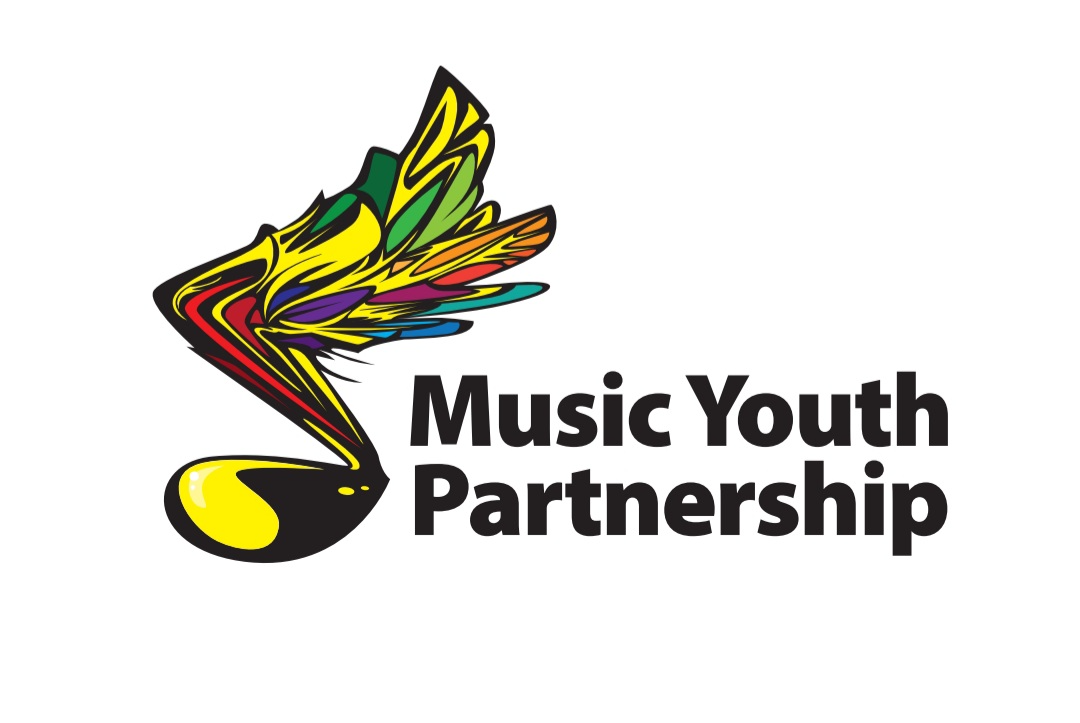
Mindfulness. It is a word that many people have heard, a buzzword. Although the word is used frequently, its meaning of it is not often stated. This idea, however, can improve the way students think of their music and the way they perform it. Musicians have some of their most memorable and best performances when they completely immerse themselves into the music. They feel more engaged and extremely focused on the task at hand: giving an outstanding performance. This type of mindset is linked with mindfulness. This idea can be practiced within a choral, orchestral, band, or general music classroom to help students enjoy their performances and practices more and increase their growth of musicianship. Students can also apply their knowledge of mindfulness outside of their music classroom, as can their directors. The learning does not have to stop with music.
What is mindfulness?
Mindfulness can be described as mirror-thought, thought that reflects only what is presently happening and in exactly the way it is happening (Gunaratana, 2011). It is a non-judgmental moment-by-moment experience. Thoughts come and go in the mind, but in order to be mindful, one must acknowledge the thought and let it go in order to be in the present time. Another psychological term similar to, and often confused with, mindfulness is flow. Flow is the intense enjoyment resulting from engagement in intrinsically rewarding tasks due to, in some part, an individual’s degree of immersion in relationship to an activity (Diaz, 2011). This occurs often with musicians during practice, who may be so focused on the music in front of them that they forget how long they may have been practicing. Time seems to slip away because of the high-level focus.
Although both terms are similar, it is important to note the difference. Flow must be “neither too difficult nor too easy in relationship to their [a person’s] skills” (Diaz, 2011). The task must have clear goals, and offer opportunities for feedback. Mindfulness, on the other hand, is an experience that is “non-elaborative, non-judgmental, present-centered awareness in which each thought, feeling, or sensation that arises in the attentional field is acknowledged and accepted as is” (Diaz, 2011, p. 45).
The reason this concept is important in the music education world is because of how this can benefit students mentally in class as well as their daily lives. Mindfulness training has been used as a clinical intervention for enhancing emotional well-being that can modify aspects of psychological attention and a treatment for various physiological disorders (Diaz, 2013). This heightened awareness of the mind can help those who may suffer from stress, depression, anxiety, bipolar disorder, and so forth. Not only that, but because of the engagement in the present and what is going on at that very moment, it can make a huge difference on musicality and enjoyment of practicing or performing a piece of music.
Music and Mindfulness Research
To explore whether engaging in mindfulness prior to music listening might serve as a way of enhancing attentional skills, Diaz (2011) conducted an experiment to intertwine music and psychology through mindfulness. At a large university in the U.S., Diaz randomly selected multiple undergraduate and graduate students who were enrolled in music classes or ensembles. These students used a device called a Continuous Response Digital Interface (CRDI) in order to register the aesthetic responses in relationship to listening to music. The students were split into different groups, two groups that had mindfulness induction and two groups that did not. The more the student had an aesthetic response to the music, the more the student turned the CRDI dial to the right. Diaz found that the students had the strongest aesthetic response after the mindfulness induction. He concluded that if the results are replicable, mindfulness could be useful as a means of increasing awareness and concentration during cognitive/affective tasks related to music (Diaz, 2013).
Another study that was done used an orchestra to investigate whether musicians who were in a mindful state while performing would have more enjoyment during the performance, as well as be more enjoyable to listen to (Eisenkraft & Russell, 2009). The researchers used volunteered members from a large university symphony orchestras and a volunteer symphony orchestra that included trained musicians and members of a college-community choir, as well as their conductors.
For the first orchestra, the students were presented with a piece that they had performed before and were asked to perform it twice. The conductor would tell them either of the following phrases: “Think about the finest performance of this piece you can remember, play it that way” or “Play this piece in the finest manner you can, offering subtle new nuances to your performance” (Eisenkraft & Russell, 2009, 127). The first phrase was used for the control condition and the second served as the experimental condition. After each performance, the musicians were asked to rate how much they enjoyed the performance on a scale of 1 to 10. After the performances, members of a local community chorus were asked to listen to both recordings and answer a questionnaire about the performances. The second orchestra received different pieces of music, but the experiment was conducted in the same fashion as the first orchestra. The results of the study showed that not only did the audience prefer the mindful performances for both orchestras, but that the musicians enjoyed their performances more in the mindful condition.
These experiments show that mindfulness while performing and listening result in more positive responses from both the musicians and the audience. These positive experiences can be practiced in the classroom with any vocal or instrumental ensemble.
Mindfulness Practices
As an educator, using various practices to help students understand new concepts is one of the most useful ways to promote learning. Different mindfulness practices that one can use include meditation, breathing exercises, listening exercises, and many more. It would also be useful to introduce the topic of mindfulness to students through an activity that can be done in the classroom.
There are many resources to help anyone practice mindfulness. Here are examples of three internet-based sites that are good places to begin to get a general sense of mindful practices: Next three paragraphs should be an indented itemized list
- The website, Happify.com, is a personalized way to track one’s use of mindfulness in daily activities. It has many exercises, such as basic meditation that can last 10 minutes or even less than 5. It targets not only mindfulness, but also ways to make one’s daily life happier, such as stress relief, body care, and general advice.
- Livingwell.org.au is a site targeted towards men, but the exercises and description of what mindfulness is and is not can be useful to paint a clearer picture of this concept. It has mindfulness activities for eating, walking, breathing, and various other exercises. There are mp3s that are on the website that can be downloaded, as well as written text instructions.
- Mindfulteachers.org is one of the best websites for any educator to look at. It not only has activities, but also book recommendations, expert interviews, methods of self-care for teachers, and so forth. This is an extremely useful source for teachers to get in contact with other educators who have implemented mindfulness in their own classrooms and lives.
- There is a wide range of resources to learn about mindfulness and different practices available via videos, recordings, and books. See the Annotated Bibliography for information about several that I have found valuable.
Once a teacher has learned to practice mindfulness, it is time to use it in a musical setting. Here are two activities I adapted from the Diaz (2013) and Eisenkraft and Russell (2009) research.
Listening: One activity that could be used to help focus students’ attention during music is a listening exercise. It would be helpful for the music being played to be a piece that the students are either working on or will be working on. The benefit of choosing known or soon-to-be known music is so the students incorporate these ideas into their practice within and outside the classroom.
For this activity, students will be asked to listen to a recording of their music with their eyes closed. They should be focused on the music, what it sounds like, what emotions they are feeling, what image is going on in their mind. See Appendix A for teacher instructions and questions to use with the students.
Performing: Another hands-on activity that can be done to improve performance practice is similar to the orchestra rehearsal experiment described previously. Students will sing/play through the piece of music or a specific section as they normally would. When they have finished their performance, the director tells the students: “Now this time when we go through the piece/section, be mindful. Add personal nuances and become the music.” This should either follow or be followed up by previous discussions of what the piece means and/or the history behind it, in order to help students make connections. After the performance, discuss the differences of each performance with the students and ask if they enjoyed performing more the first time through or the second. It would be a good idea to record each of the performances. These recordings can then be played for the class or be used as feedback for the director.
Conclusion
Although mindfulness is a semi-new and trendy topic of discussion, it is an effective tool to use in the classroom. It gives the students a sense of self-awareness about their musicality and mental well-being. Through multiple practices, students will become more comfortable with this technique and incorporate it into their performance practice. Mindfulness is a tool that can be used outside of the classroom in everyday life. It reduces negative emotions and stress, helps us focus and tune out distractions, and increases density of gray matter in brain regions that are linked to learning, memory, emotion regulation, and empathy (Weiss 2016). Although observing traditions is valuable, teachers and students can also benefit from following new, research-based trends and ideas.
References
Ben-Kiki, T., Leidner, O., & Parsons, A. (2016). Happify. Retrieved from
http://my.happify.com/
Boyd, C., Decker, J., Foster, G., Harvey, C., Lord, H., & Teixeira, H. (2015). Living Well.
Retrieved from http://www.livingwell.org.au/
Diaz, F. M. (2011). Mindfulness, attention, and flow during music listening: An empirical investigation. Psychology of Music, 41, 42-58. doi: 10.1177/0305735611415144
Eisenkraft, N., Langer, E., & Russell, T. (2009) Orchestral performance and the footprint of mindfulness. Psychology of Music, 37, 125-136. doi: 10.1177/0305735607086053
Gunaratana, B. (2011). Mindfulness in Plain English. Somerville, MA: Wisdom Publications.
Hannay, C. (2016). Mindful Teachers: Living, Learning, & Teaching with Mindful Awareness. Retrieved from http://www.mindfulteachers.org/
Weiss, Leah (2016). Mindfulness. Retrieved from http://greatergood.berkeley.edu/topic/mindfulness/definition
Appendix A: Sample Listening Activity (may be turned into a worksheet)
Teacher Instructions: Read through all of the questions with the class so that they have options to think about during the piece. They may pick any of the questions to answer and share. The music will be played for one-minute or whenever there is a good first stopping point. During the listening section, students will close their eyes and focus solely on the music. When the music is done, students will write for one minute about what they heard for one of the following questions below. Repeat this process by continuing the piece or choosing a different one to present. It is important that students are aware that whatever feelings or thoughts occur must be acknowledged and non-judgmental in order to fully gain the meaning of this activity.
Worksheet Items:
Title _____________________________
Composer __________________________
What words or sounds stood out to you during that piece? (They could be positive or negative)
Tell us what was the setting of the piece. What colors? Was it night or day? Are there people in your scene?
What type of emotions were you feeling during this piece?
Did you enjoy this piece? Why or why not?
Useful Resources
Gunaratana, B. (2011). Mindfulness in Plain English. Somerville, MA: Wisdom Publications.
Kabat-Zinn., Penman, D., & Williams, M. (2012). Mindfulness: An Eight-Week Plan for Finding Peace in a Frantic World. New York, NY: Rodale, Inc.
Sealey. (2015, July 14). Guided Meditation for Detachment From Over-Thinking (Anxiety/OCD / Depression) [Video file]. Retrieved from https://www.youtube.com/watch?v=1vx8iUvfyCY























